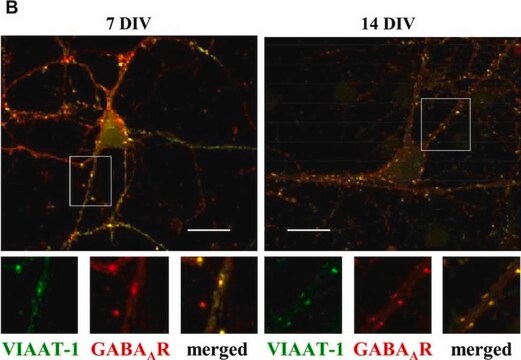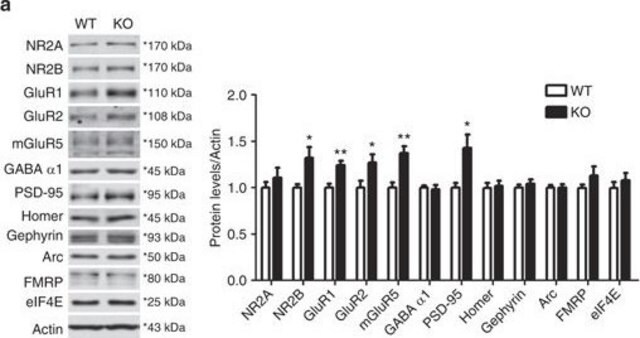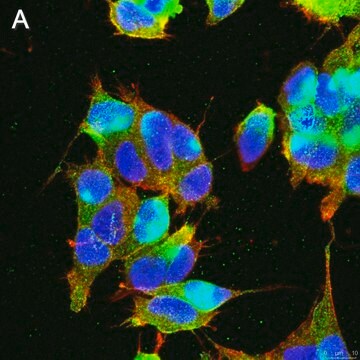05-474
Anti-GABA A Receptor β2/3 Antibody
clone 62-3G1, Upstate®, from mouse
Sinonimo/i:
GABA(A) receptor subunit alpha-1, gamma-aminobutyric acid (GABA) A receptor, alpha 1, gamma-aminobutyric acid A receptor, alpha 1
About This Item
Prodotti consigliati
Origine biologica
mouse
Livello qualitativo
Forma dell’anticorpo
purified antibody
Tipo di anticorpo
primary antibodies
Clone
62-3G1, monoclonal
Reattività contro le specie
rat, bovine, human
Produttore/marchio commerciale
Upstate®
tecniche
immunohistochemistry: suitable
immunoprecipitation (IP): suitable
western blot: suitable
Isotipo
IgG
N° accesso UniProt
Condizioni di spedizione
wet ice
modifica post-traduzionali bersaglio
unmodified
Informazioni sul gene
human ... GABRA1(2554)
Descrizione generale
Specificità
Immunogeno
Applicazioni
Immunohistochemistry: This antibody has been reported to detect the GABAA Receptor β2 and β3 subunits in paraffin embedded and frozen rat brain sections which had been fixed with 4% paraformaldehyde or 0.1% glutaraldehyde and permeabilized with Triton X-100.
Neuroscience
Neurotransmitters & Receptors
Qualità
Western Blot Analysis: 0.5-2 μg/mL of this antibody detected the GABAA Receptor β2 and β3 subunits from 20 μg of rat brain microsomal preparation (Catalog # 12-144).
Descrizione del bersaglio
Stato fisico
Stoccaggio e stabilità
Risultati analitici
Brain tissue
Altre note
Note legali
Esclusione di responsabilità
Non trovi il prodotto giusto?
Prova il nostro Motore di ricerca dei prodotti.
Raccomandato
Codice della classe di stoccaggio
10 - Combustible liquids
Classe di pericolosità dell'acqua (WGK)
WGK 1
Certificati d'analisi (COA)
Cerca il Certificati d'analisi (COA) digitando il numero di lotto/batch corrispondente. I numeri di lotto o di batch sono stampati sull'etichetta dei prodotti dopo la parola ‘Lotto’ o ‘Batch’.
Possiedi già questo prodotto?
I documenti relativi ai prodotti acquistati recentemente sono disponibili nell’Archivio dei documenti.
Il team dei nostri ricercatori vanta grande esperienza in tutte le aree della ricerca quali Life Science, scienza dei materiali, sintesi chimica, cromatografia, discipline analitiche, ecc..
Contatta l'Assistenza Tecnica.







